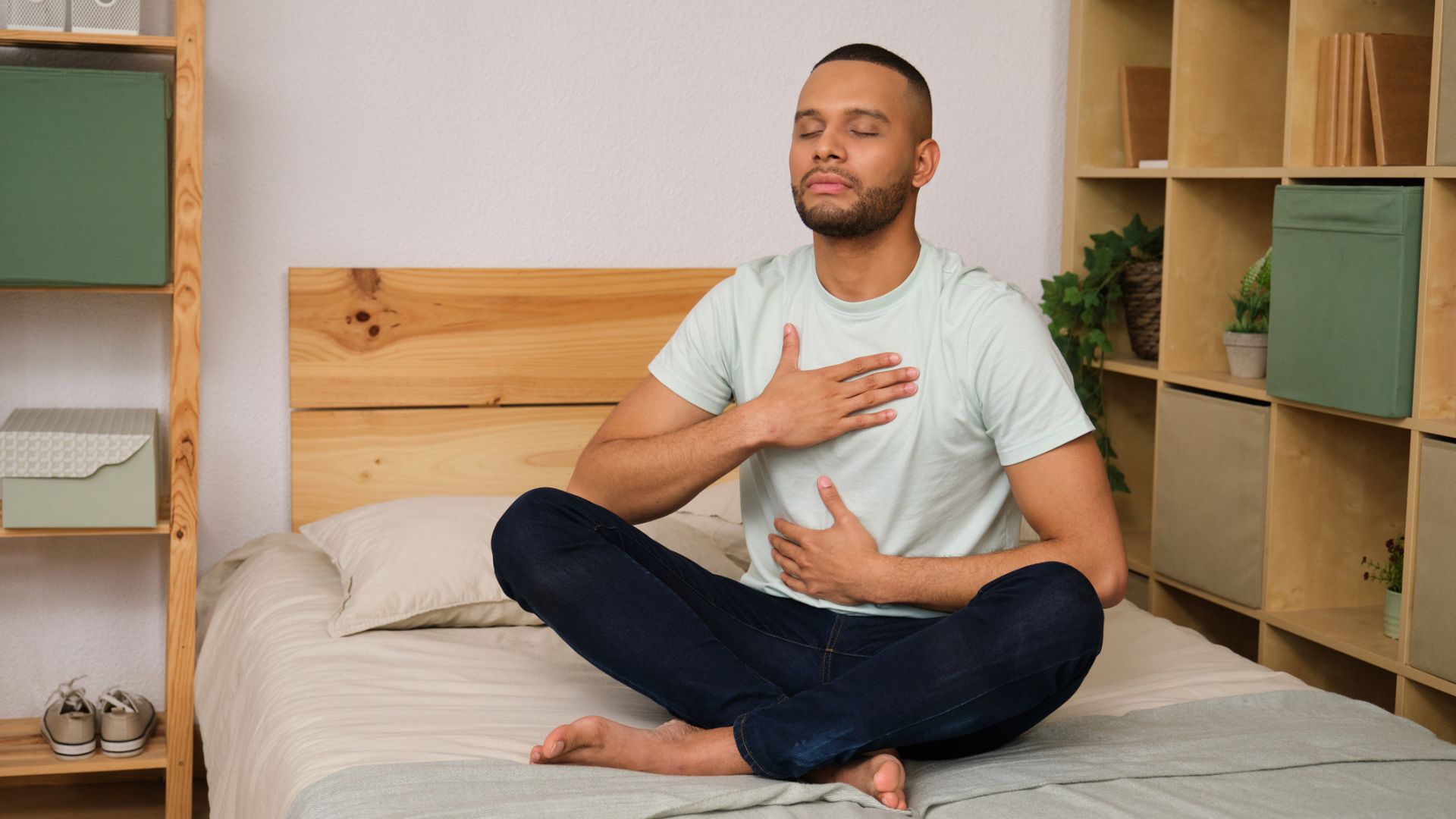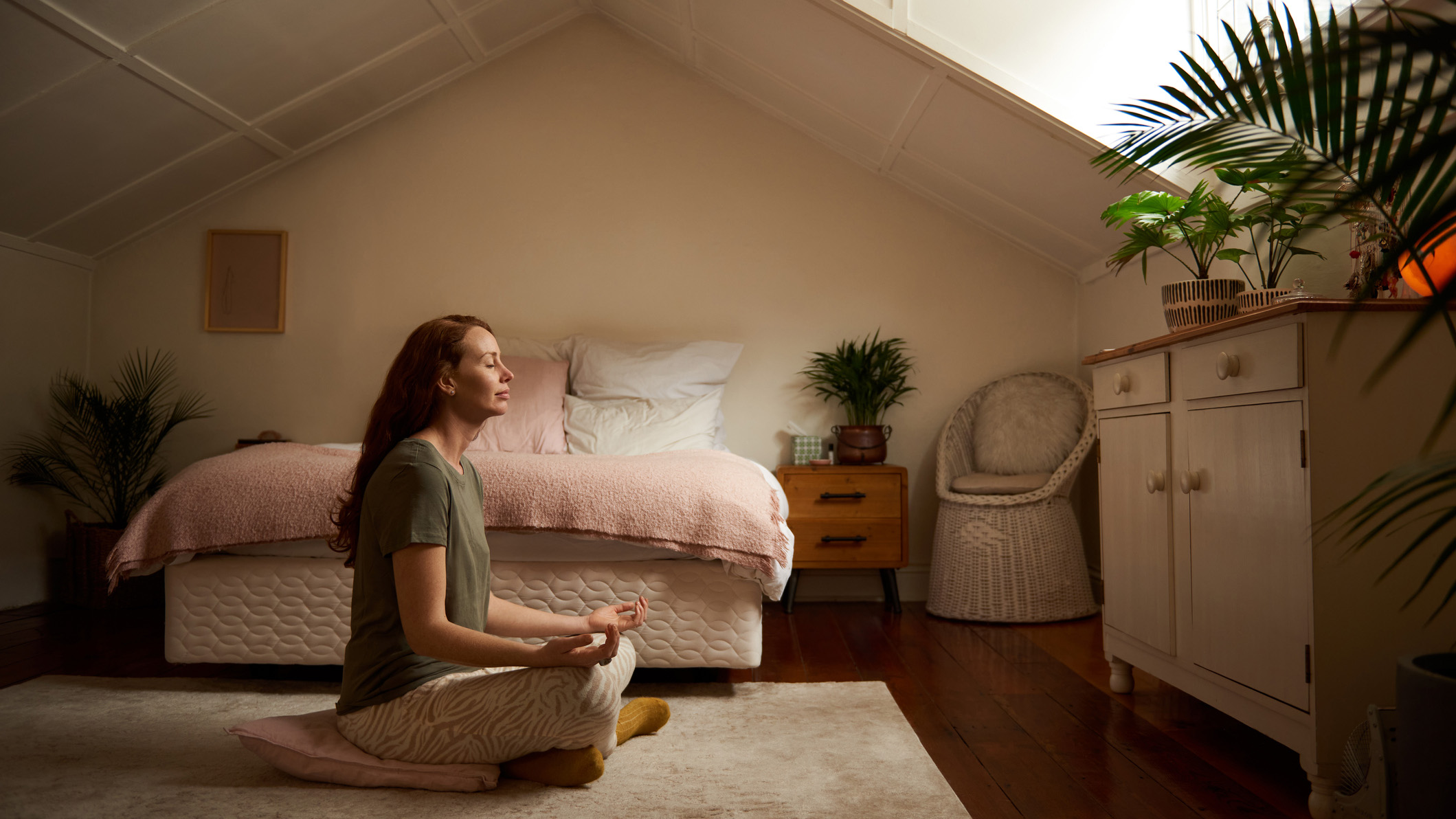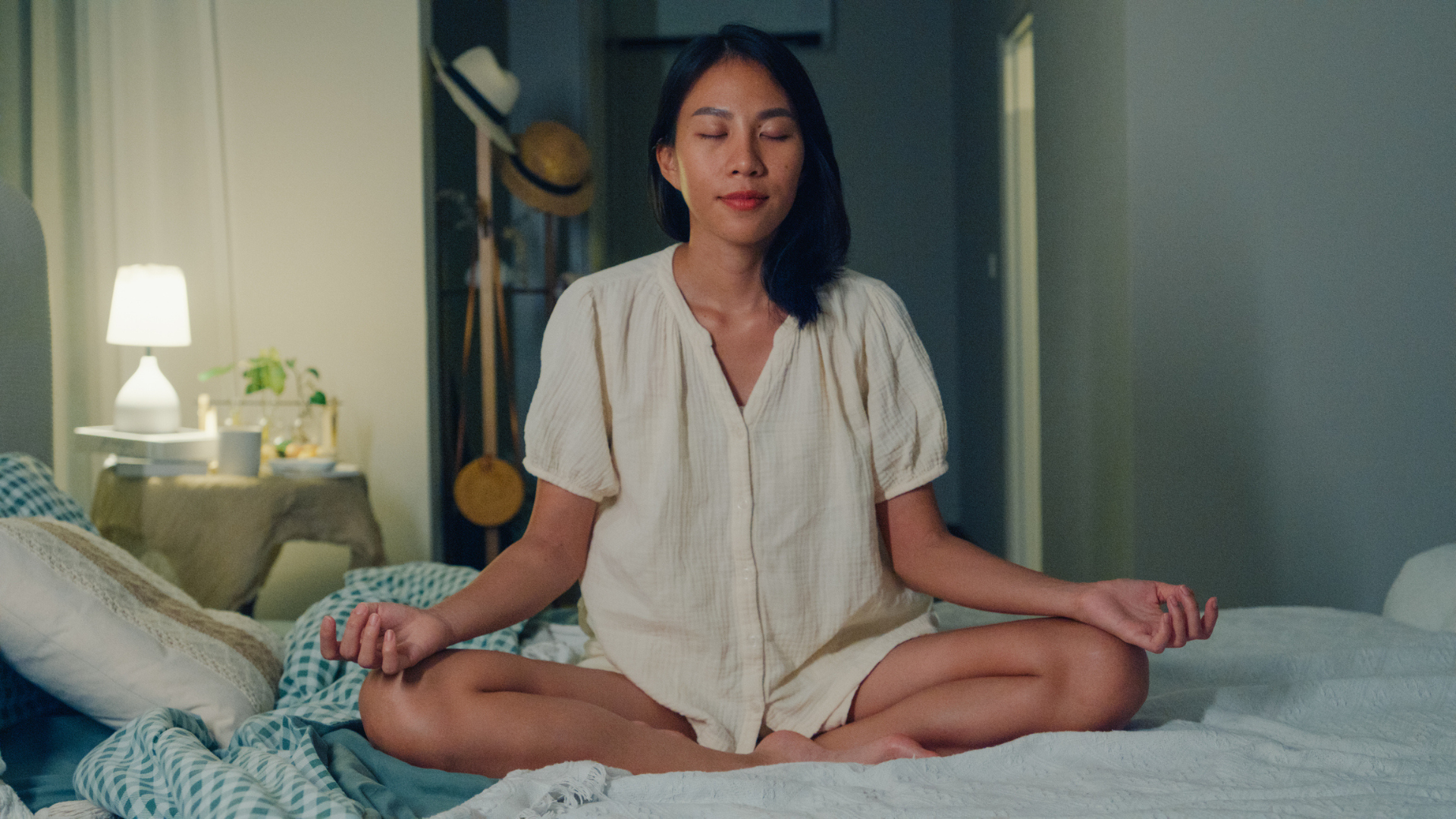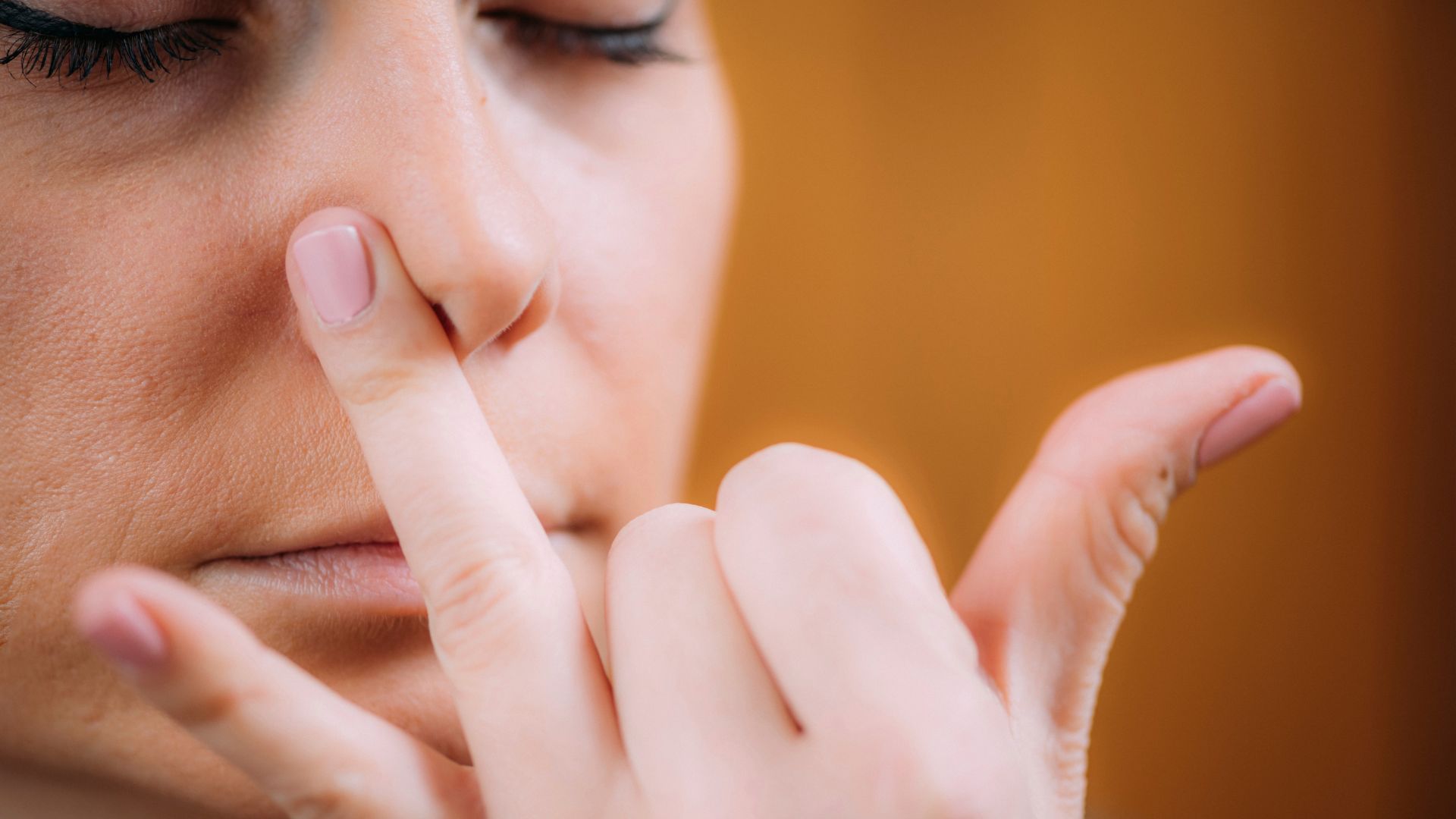Fall asleep fast with this one breathing technique proven to relax your whole body
Resonance frequency breathing slows your heart rate, decreases stress and improves sleep quality

Lying awake at night staring at the ceiling is a recipe for a racing mind, increased stress and anxiety and poor sleep. Finding it difficult to fall asleep every night can lead to sleep deprivation, but there are ways to combat an active brain at night.
One scientifically proven way to fall asleep fast is through resonance frequency breathing (RFB.) In fact, not only can it help you fall asleep fast, it’s also proven to increase the quality of sleep you get. But how can just changing your breathing make such a difference?
We’ve looked into the studies around RFB and spoken to Dr. Leah Kaylor, a clinical psychologist who specializes in sleep and insomnia, to find out what frequency breathing is, the science behind how it works and how to try it for yourself. However, like any technique for falling asleep fast, you need to find the right solution for you, so we’ve also included our top three alternative breathing exercises to help you get the rest you need.
- Read more: Intrusive thoughts keeping you awake? Try this ER doctor ‘brain hack’ to fall asleep quickly
What is resonance frequency breathing?
Resonance breathing, or resonance frequency breathing refers to slowing your breathing to around 5-6 breaths per minute. Alongside this, your breathing should be balanced, inhaling and exhaling for an equal amount of time. One of the most popular examples of this is inhaling for 5 seconds and exhaling for 5 seconds.
Practising this kind of breathing for 20 minutes a day has been proven to increase our parasympathetic nervous system activity, and decrease sympathetic activity.

Our sympathetic nervous system is responsible for keeping us alert (and is responsible for our fight or flight response) whereas our parasympathetic system is associated with rest and recovery. Therefore, increasing your parasympathetic activity through breathing exercises means lowering stress and nighttime anxiety levels.
“RFB creates a state of coherence between the heart, lungs, and nervous system allowing for a deep state of relaxation,” says Dr Kaylor.
Sign up to get the BEST of Tom's Guide direct to your inbox.
Get instant access to breaking news, the hottest reviews, great deals and helpful tips.
She uses the analogy of an orchestra to explain how this can benefit our wellbeing: “For everything to run smoothly, all the instruments (your heart, brain, lungs, and nervous system) need to be in sync playing together in harmony.”
How to try resonance frequency breathing
Dr Kaylor has shared the steps she suggests to try this breathing technique:
“Sit or lie down in a relaxed position. If you are lying, make sure your spine in a neutral position and your body is at ease.
“Inhale slowly through the nose for 4-6 seconds.
“Exhale gently through the mouth or nose for 4-6 seconds.
“Keep the breath smooth and natural.
“Focus on breathing deeply into the belly rather than shallow chest breathing. To ensure this, place one hand on the chest, and one hand on the belly. Notice how the hand on the belly rises and falls with each breath.
“Practice for 5-10 minutes before bed.”
Repeating this kind of breathing every day as part of your nighttime routine will make it feel more natural and easier to achieve. Also, the more you breathe in this way, the better overall and long-lasting benefits you’ll feel — this mindful approach to good sleep can help if you're struggling to build a routine.
How does resonance frequency breathing help you fall asleep?
Alongside decreasing stress, this type of breathing is associated with increased heart rate variability (HRV.) This is the difference between your heart beats and can be just a fraction of a second, making it difficult to record.
Increased HRV has also been shown to improve sleep quality and duration. Increased HRV also leads to better overall wellbeing, because it shows you can adapt to different situations and are generally less stressed. Dr Leah Kaylor breaks down exactly what HRV means:
“Even though your heart may beat at a steady rate, the time between each beat is not the exact same. For example, if your heart beats 60 times per minute, it does not mean that there is exactly one second in between every beat. Instead the time between beats might be 0.95 seconds, then 1.05 seconds, then 0.97 seconds and so on.”

By activating your parasympathetic nervous system, reducing stress and boosting mood (meaning anxiety and depression are less likely to interfere with your sleep) resonance frequency breathing can make it easier to fall asleep and stay asleep. Deep breathing has also been proven as an effective treatment for insomnia, so the relaxation associated with this breathing technique will make falling asleep easier.
“Physiological coherence is when your heart, breathing, and nervous system work in a smooth, balanced and coordinated way. This creates a state of calm, focus, and relaxation which is excellent for drifting off to sleep,” Dr Kaylor explains.
Other breathing techniques to fall asleep fast
Breathing techniques have been proven time and time again to benefit our sleep and help us fall asleep fast. But it’s important you find the right one that works for you. To find out more, head to our breakdown of the seven most popular breathing exercises for sleep, but for now, here’s three of our favorites.
1. 4-7-8 method
The 4-7-8 method is one of the most popular breathing exercises to calm the mind and body and fall asleep fast. It includes the following steps:
- Breathe deeply through the nose for four seconds, ensuring your diaphragm expands
- Hold that breath for second seconds
- Exhale for eight seconds slowly through the mouth, creating a whooshing sound
- Repeat up to four times
This will activate your parasympathetic nervous system like RFB. The key to this method is practice, because the more you repeat it the easier it will get and the more effective it will become.
2. Moon breathing

Moon breathing is a technique that is derived from yoga rituals. It’s an ancient practice, sometimes referred to as alternate nostril breathing, that aims to ‘reset’ the nervous system and relax the mind. Here’s how to do it:
- Lie down and close your eyes
- Position your right hand with your thumb up, your fingers closed into your palm and your ring finger up
- Place your thumb on your right nostril and cover it
- Take a deep breath, inhaling only through your left nostril
- Using your ring finger, cover your left nostril
- Exhale your breath through your right nostril
3. Counting method
Plenty of sleep methods revolve around counting, because it’s a great way to keep the mind focused instead of racing with anxious thoughts. This is a simple breathing exercise that mirrors RFB, but the focus shifts to the process of counting to help you fall asleep fast:
- Inhale slowly and deeply for a count of five seconds
- When you’ve counted to five, exhale as you count to five again
- Repeat until you feel relaxed
While this exercise is an effective way to help you fall asleep fast, it can also be used during the day when you feel stressed or anxious.

Lauren is an experienced writer and editor in the health and lifestyle industry and has led many campaigns and projects that deliver news, advice, and research on all things sleep. As the Sleep Features Editor for Tom’s Guide, Lauren writes, commissions and edits sleep and mattress content, from in-depth how-tos in sleep and mattress health to interviews with doctors and neuroscientists on the latest news in sleep. Lauren regularly tests new sleep tech and accessories to evaluate their effectiveness for getting good quality sleep and easing specific sleep struggles like nighttime anxiety. Alongside this, Lauren reports on the best mattress brands out there, like Helix, Saatva, and DreamCloud, helping readers find the right mattress for them and the best deals on them.
